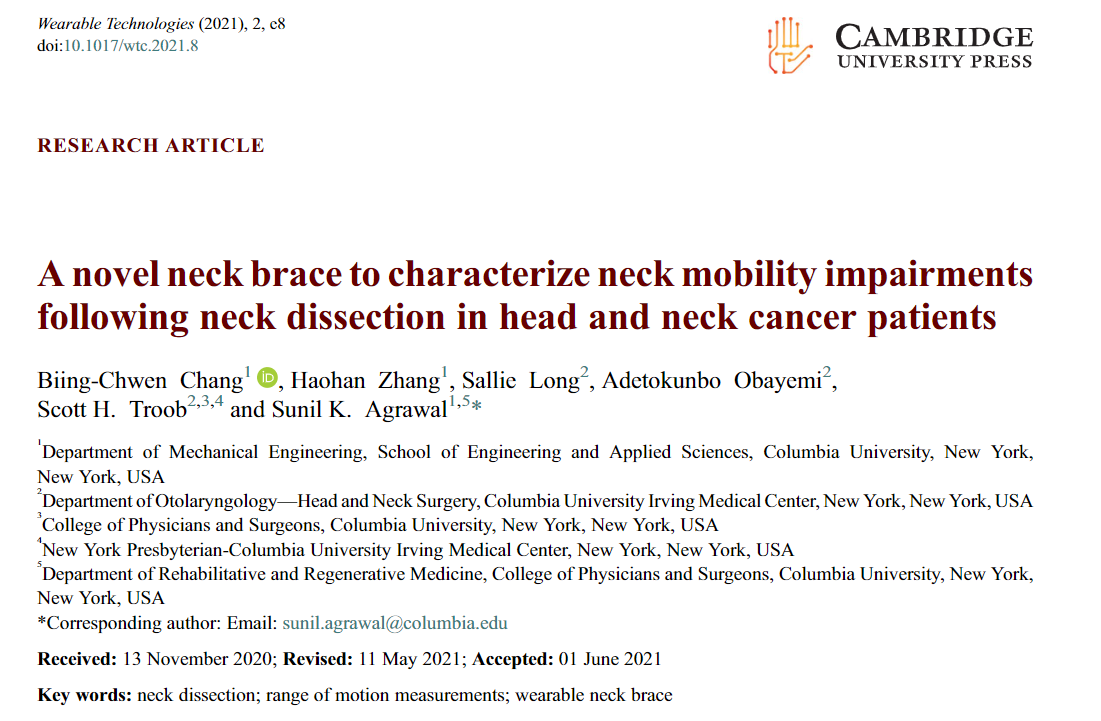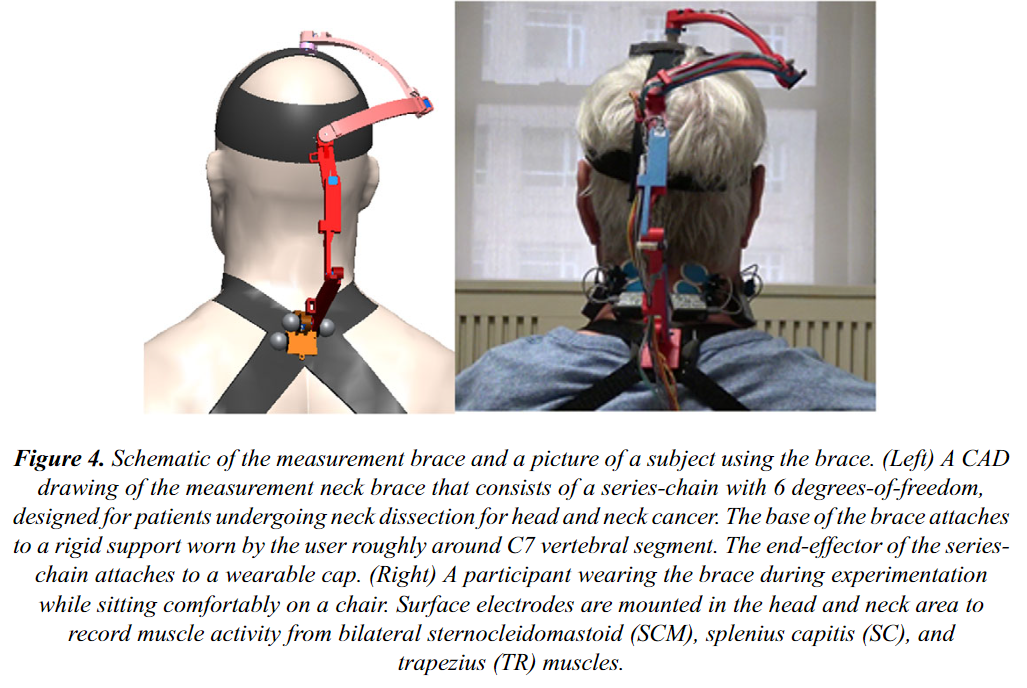A paper titled “A novel neck brace to characterize neck mobility after neck surgery in cancer patients” is now available on Wearable Technologies. This work was collaborated with researchers from the Robotics and Rehabilitation (ROAR) Lab at Columbia University.
This article introduces a dynamic neck brace to measure the full range of motion (RoM) of the head–neck. This easy-to-wear brace was used, along with surface electromyography (EMG), to study changes in movement characteristics after neck dissection (ND) in a clinical setting. The brace was inspired by the head–neck anatomy and was designed based on the head–neck movement of10 healthy individuals. A 6 degrees-of-freedom open-chain structure was adopted to allow full RoM of the head–neck with respect to the shoulders. The physical model was realized by 3D printed materials and inexpensive sensors. Five subjects, who underwent unilateral selective ND, were assessed preoperative and postoperative using this prototype during the head–neck motions. Concurrent EMG measurements of their sternocleidomastoid, splenius capitis, and trapezius muscles were made. Reduced RoM during lateral bending on both sides of the neck was observed after surgery, with a mean angle change of 8.03° on the dissected side (95% confidence intervals [CI], 3.11–12.94) and 9.29° on the nondissected side(95% CI, 4.88–13.69), where CI denotes the confidence interval. Axial rotation showed a reduction in the RoM by5.37° (95% CI, 2.34–8.39) on the nondissection side. Neck extension showed a slight increase in the RoM by 3.15°(95% CI, 0.81–5.49) postoperatively. This brace may serve as a simple but useful tool in the clinic to document head–neck RoM changes inpatients undergoing ND. Such a characterization may help clinicians evaluate the surgical procedure and guide there covery of patients.


